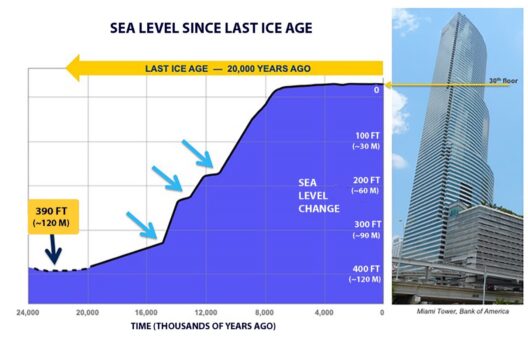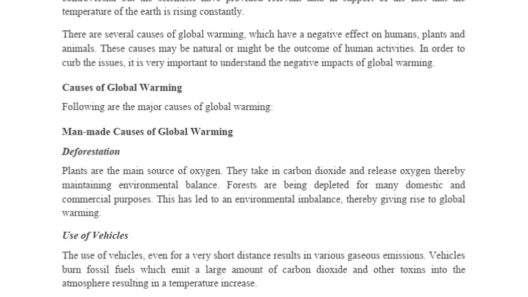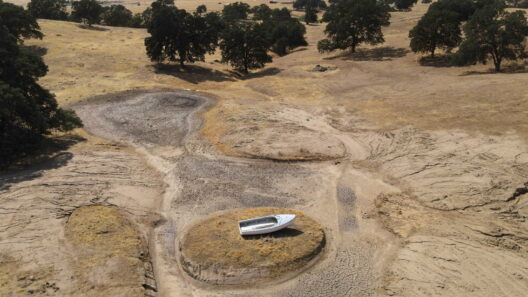Global warming is one of the most pressing issues confronting humanity today. It represents a significant increase in the Earth’s average surface temperature due to rising levels of greenhouse gases in the atmosphere. The future of our planet hangs in the balance, and finding effective solutions to combat climate change is imperative. To alter the trajectory of climate change requires a multifaceted approach, integrating technological innovation, policy reform, and individual lifestyle changes. This article will explore various strategies aimed at mitigating global warming and promoting sustainable living.
Understanding the urgency of this crisis serves as a catalyst for change. The following sections delve into practical solutions that individuals, organizations, and governments can employ to collectively ease the burden of climate change.
Innovative Energy Solutions
The transition from fossil fuels to renewable energy sources stands as a cornerstone in the fight against global warming. Fossil fuels, such as coal, oil, and natural gas, release vast amounts of carbon dioxide when burned, significantly contributing to greenhouse gas emissions. To mitigate this, investing in solar, wind, hydroelectric, and geothermal energy provides a promising alternative. These renewable resources produce little to no greenhouse gas emissions during operation, offering a cleaner, sustainable energy supply.
Improving energy efficiency is equally paramount. Enhancing insulation in buildings and upgrading to energy-efficient appliances can drastically reduce energy consumption. For instance, the adoption of LED lighting has revolutionized energy use in residential and commercial settings, decreasing electricity demand while maintaining brightness and quality.
Additionally, electrifying transportation systems can substantially reduce the carbon footprint associated with traditional gas-powered vehicles. State and local governments are increasingly investing in electric vehicle (EV) infrastructure, including charging stations and incentives for purchasing EVs. This shift, if widely adopted, would help reduce emissions from one of the largest sources of pollution: transportation.
Radical Policy Reforms
Addressing climate change requires systemic change, often driven by comprehensive policy reforms. Governments play a vital role in this process, as their policies significantly impact emissions and environmental practices. Implementing carbon pricing mechanisms, such as carbon taxes or cap-and-trade systems, incentivizes businesses to reduce their carbon footprints while generating revenue that can be reinvested in clean energy initiatives.
Moreover, subsidies for fossil fuel industries should be reevaluated and redirected towards renewable energy sectors. By curtailing financial support for nonrenewable resources, governments can accelerate the integration of sustainable alternatives in the energy market.
International cooperation also bears significance. Climate agreements, such as the Paris Agreement, aim to unite nations under a common goal of limiting global warming to below 2 degrees Celsius. Establishing legally binding commitments and robust accountability measures can bolster global efforts in combating climate change and foster collective innovation.
Sustainable Agriculture Practices
The food production system plays a critical role in global warming, with agriculture contributing to approximately 15% of worldwide greenhouse gas emissions. To rectify this, embracing sustainable agricultural practices is paramount. Techniques such as crop rotation, agroforestry, and organic farming enhance soil health and biodiversity while reducing dependency on chemical fertilizers and pesticides.
Agricultural technology has also made significant strides. Precision farming, employing data analytics and biotechnology, allows farmers to use resources more efficiently, thus minimizing waste and emissions. Furthermore, plant-based diets hold promise, as the livestock industry is one of the largest contributors to greenhouse gas emissions. Promoting vegetarian and vegan diets not only reduces emissions but also liberates extensive land used for livestock grazing, allowing for reforestation and revitalization of natural ecosystems.
Protecting and Restoring Natural Ecosystems
Forests are often dubbed the “lungs of the Earth” due to their crucial role in absorbing carbon dioxide from the atmosphere. Therefore, halting deforestation and committing to reforestation projects are vital components of climate action. The restoration of degraded lands can sequester carbon while also enhancing local biodiversity and ecosystem services.
Wetlands, mangroves, and other carbon-rich ecosystems are equally important. These environments provide natural carbon sinks and serve as protective barriers against climate-related disasters. Investing in the preservation and restoration of these ecosystems is not just beneficial for climate purposes; it also supports wildlife and can enhance local economies through eco-tourism.
Citizen Engagement and Grassroots Movements
No effective strategy to combat global warming can be complete without public involvement. Citizen engagement through grassroots movements emphasizes community-driven solutions and awareness. Environmental organizations and local initiatives encourage individuals to adopt sustainable practices at home, such as reducing waste, conserving water, and using public transportation.
Social media has also emerged as a potent tool in raising awareness and mobilizing action. Movements like “Fridays for Future” led by young activists underscore the urgency for immediate action, fostering a global dialogue around climate issues. When citizens demand accountability from corporations and governments, they ignite a movement that can lead to significant environmental reform.
In conclusion, stopping global warming requires an amalgamation of innovative energy solutions, radical policy reforms, sustainable agricultural practices, restoration of natural ecosystems, and active citizen engagement. Each step, however small, contributes to the larger goal of preserving the Earth for future generations. It is a collective responsibility that transcends borders and demands collaboration. By embracing a sustainable future, we not only safeguard our planet but also enhance the quality of life for all living beings.







